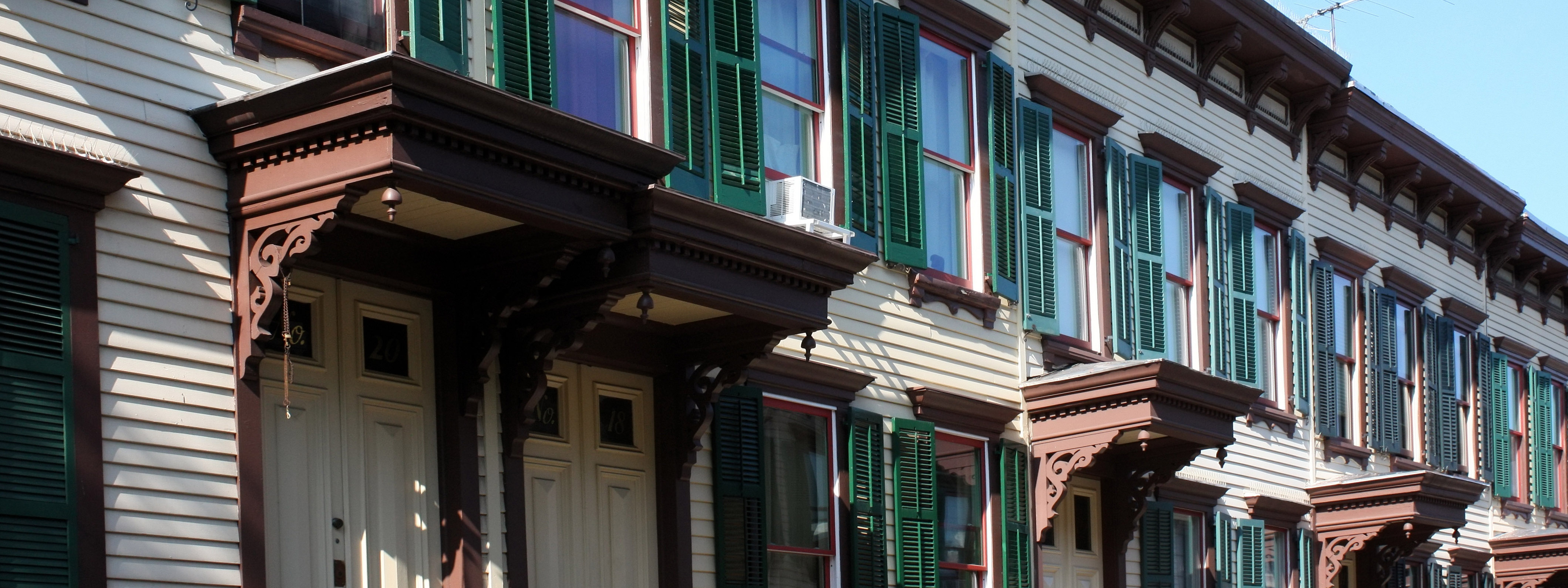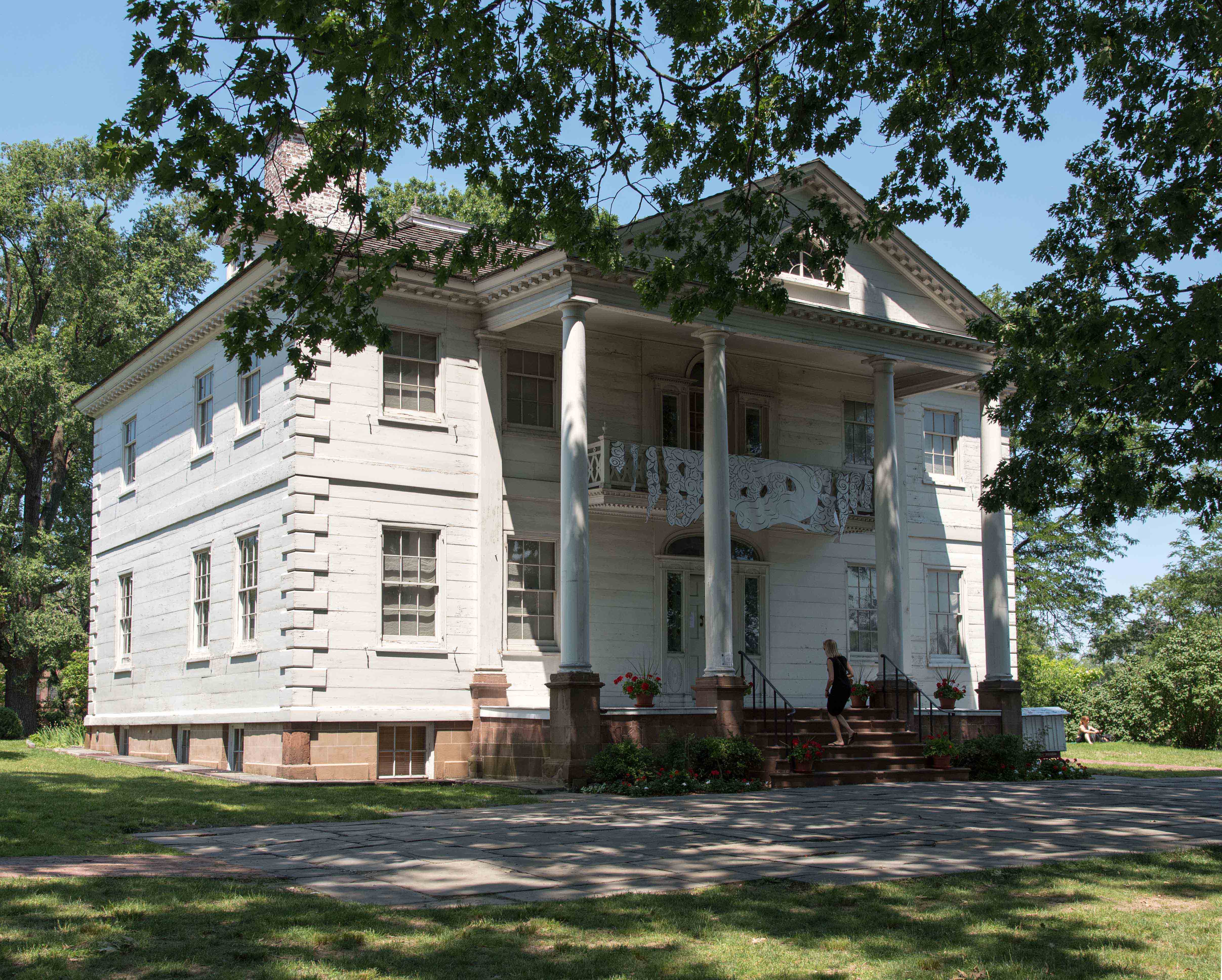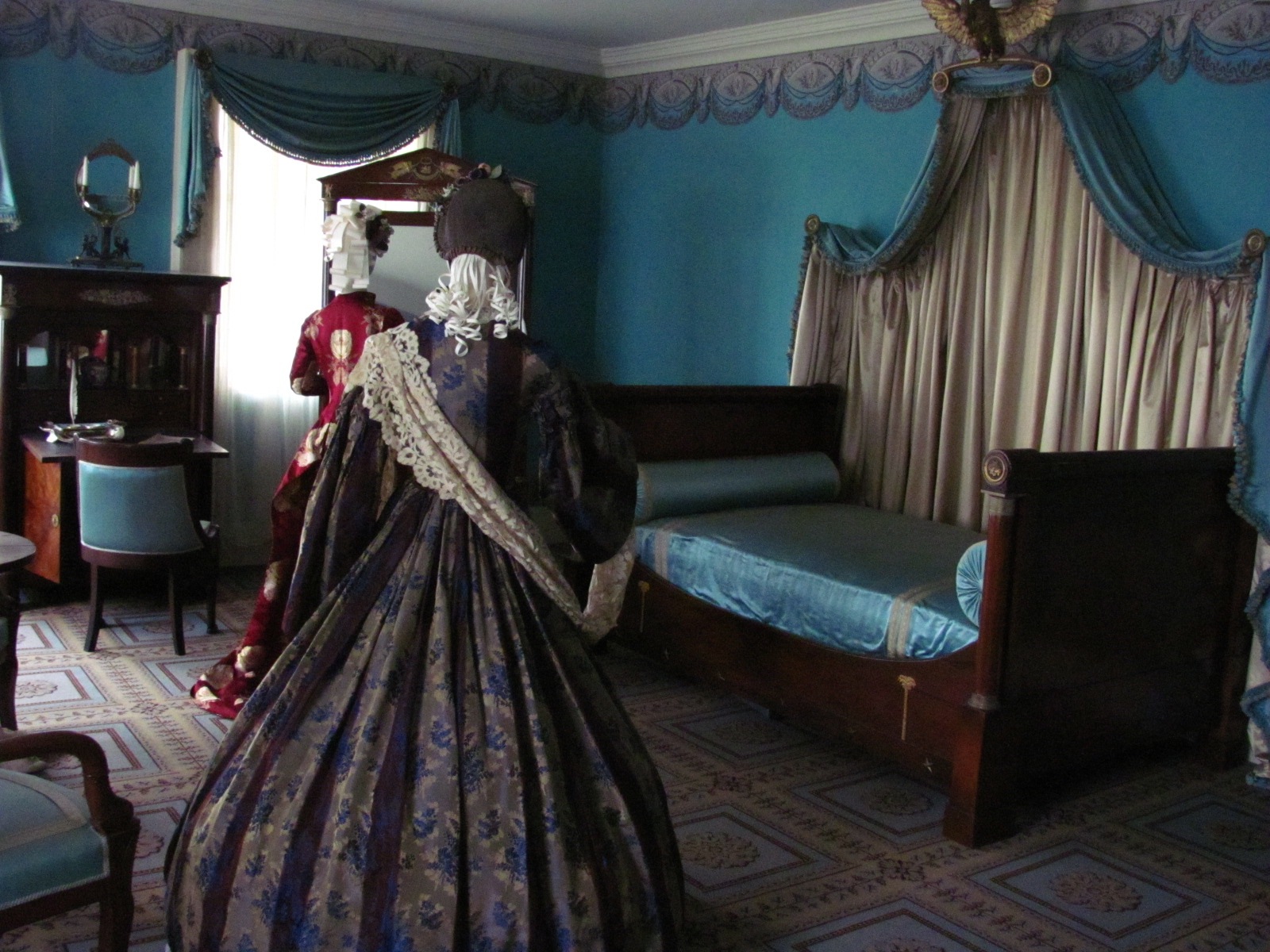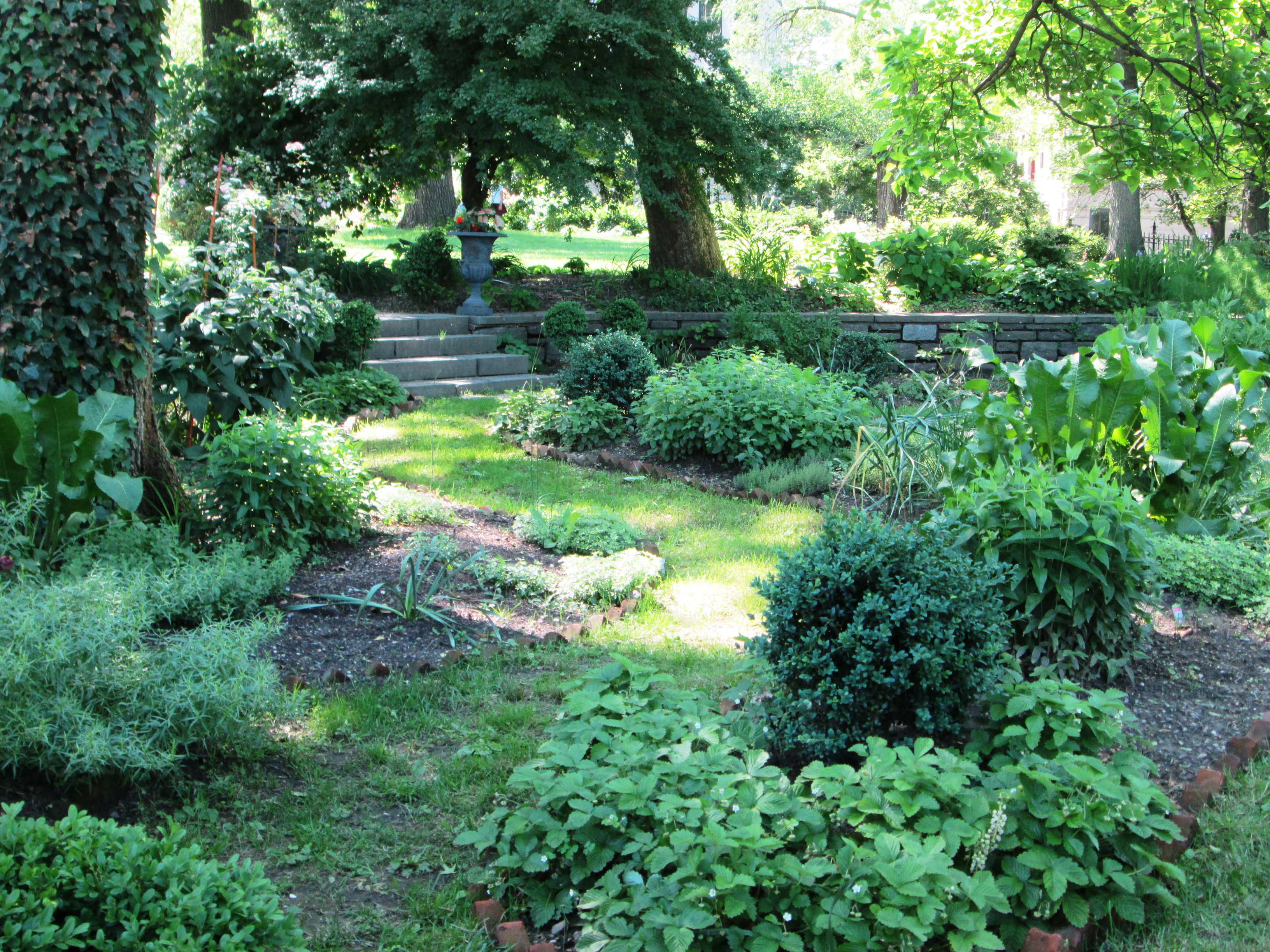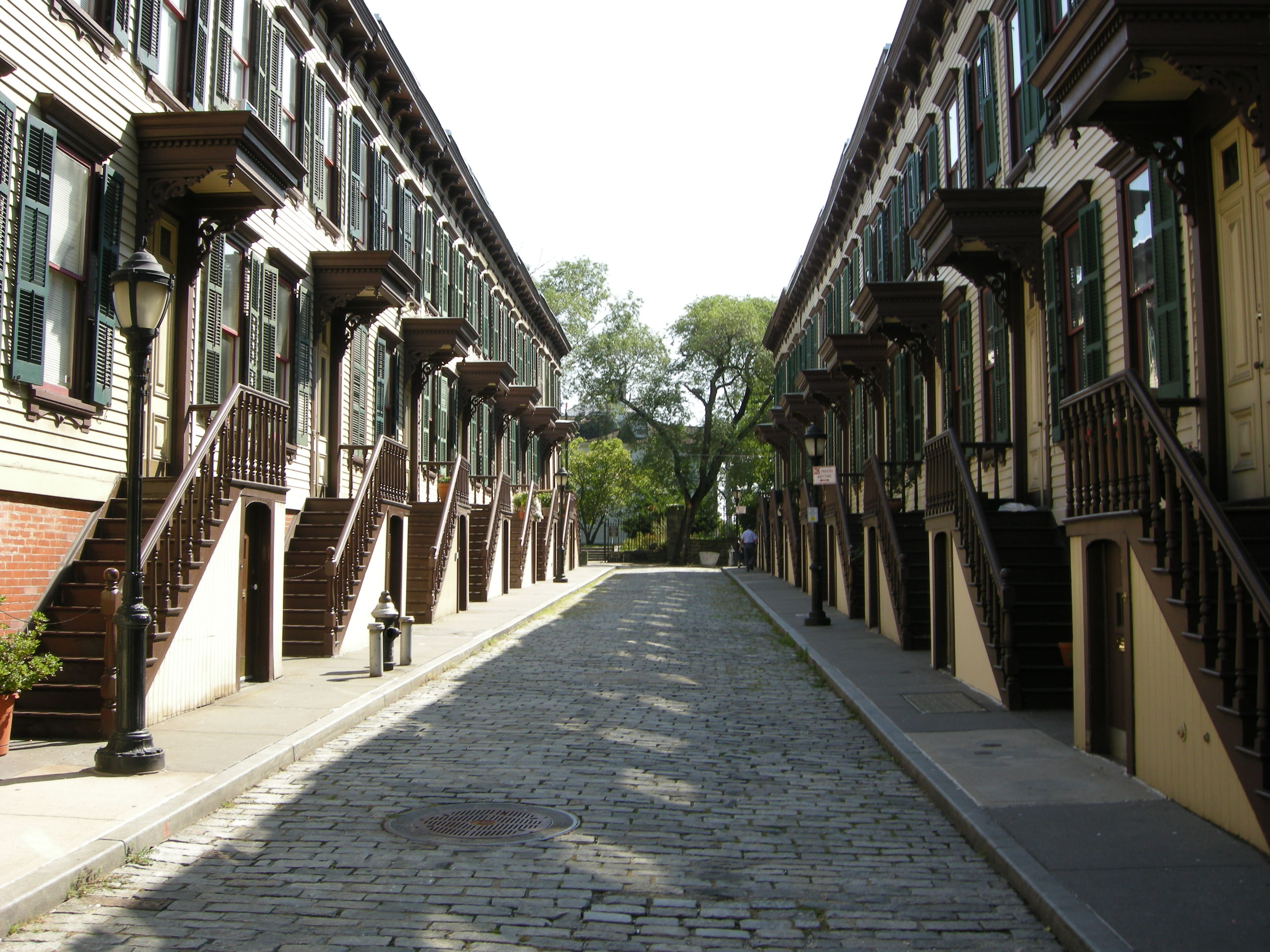Though it covers only several square blocks—from West 160th to West 162nd Streets between Edgecombe and St. Nicholas Avenues—the Jumel Terrace Historic District is rich in both history and photogenic buildings. In addition to brownstones in a variety of styles and the borough’s oldest remaining wood-frame houses, Roger Morris Park and the Morris-Jumel Mansion are within the district’s borders. Technically, however, the park and the mansion are not part of the district; instead they are landmarks in their own right.
Built in 1765, the Morris-Jumel Mansion is the oldest surviving house in Manhattan and was once home to Aaron Burr. In fact, Lin-Manuel Miranda wrote two songs for his Tony-winning musical “Hamilton” in Burr’s former bedroom in the mansion, which is now a museum. The house sits within the 1.5-acre Roger Morris Park. Lushly landscaped with trees, shrubs, and flowers, the park includes paved walkways and the occasional statuary and bench.
Colonel Roger Morris and his wife, Mary, were among the first non-Native American residents of Northern Manhattan. Their 130-acre estate, Mount Morris, stretched from the Harlem to the Hudson Rivers. In 1765 they had what is now the Morris-Jumel Mansion built, in the Palladian style, as a summer home among the fruit trees and cattle and sheep pastures.
The Morris-Jumel Mansion. Image: edwardhblake/Flickr
Being Tories, the Morrises left their home during the Revolutionary War, only to be replaced George Washington and his troops for five weeks during the autumn of 1776. The house’s strategic position on the second highest point in Manhattan, with clear views of both rivers, helped him win his first battle of the war, the Battle of Harlem Heights. It did not enable the Continental Army to defeat the British during the subsequent Battle of Fort Washington, however. One of the worst of Washington’s defeats, the battle forced him and his troops to abandon the site. In fact, the house subsequently became a headquarters for the British forces.
After the war, the nascent Federal government confiscated the home, selling it in 1810 to French-Dominican wine merchant Stephen Jumel. He lived there with his wife, Eliza, until his death in 1832. Whether Eliza was a former madam as was rumored at the time is unclear (though her mother had apparently been a prostitute). All the same, despite the Jumels’ wealth, New York society never embraced them. That didn’t deter former vice president Aaron Burr from marrying Eliza in 1833. For one thing, Burr—who not only killed Alexander Hamilton in a duel but also stood trial for treason—was no stranger to being ostracized. For another, it is believed that Burr married Jumel primarily because she was one of the richest women in the state.
Inside the Morris-Jumel Mansion. Image: rufus/Flickr
The Burrs divorced in 1836, and Eliza remained in possession of the home until her death, at age 90, in 1865. The estate was subsequently broken into more than a thousand individual lots; the city bought the house itself in 1904 and turned it into a museum. At first the mansion focused exclusively on Washington’s stint there, but today it celebrates the history of the area, the Revolution, and the 19th-century.
The front of the Morris-Jumel Mansion is distinguished by a double-height portico supported by columns, while the back includes a two-story octagonal room. The nine rooms that are open to the public include Georgian furniture and reproductions of period wallpaper and textiles. As well as its permanent collection of furnishings and artifacts from Washington, Burr, and other notables with a connection to the home, the mansion hosts special events and temporary exhibits. For instance, through February 18, 2018, it is showing “Charles Addams Family and Friends,” featuring works by the legendary cartoonist.
Roger Morris Park. Image: Beyond My Ken/Wikimedia
The New York City Landmark designation for the Jumel Terrace Historic District officially consists of 50 row homes and an apartment building that were constructed between 1882 and 1909 on lots sold off after Eliza Burr’s death. These include the 20 two-story wooden row houses that flank cobblestoned Sylvan Terrace, which had been the carriage drive of the estate when the Morrises owned it. These homes, which are among the oldest remaining wood-frame buildings in the city, each have an 11-step stoop leading to the front door; below each stoop is the basement door, just five feet high.
Sylvan Terrace. Image: sailko/Wikimedia
The row houses on Jumel Terrace and 160th and 162nd Streets are larger and more stately, in Romanesque Revival and Queen Anne styles. Made of brick and stone, they are adorned with a variety of cornices, parapets, brackets, capitals, and other architectural details. Were it not for the cars parked along the curbs and the occasional air-conditioning unit sticking out from a window, the streets would appear largely unchanged from a century ago, making this enclave well worth a visit.


